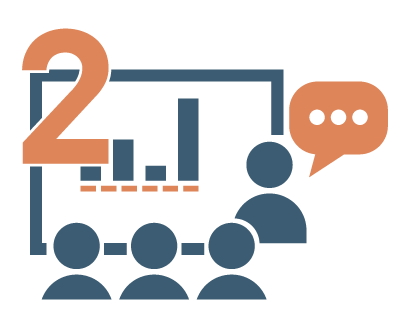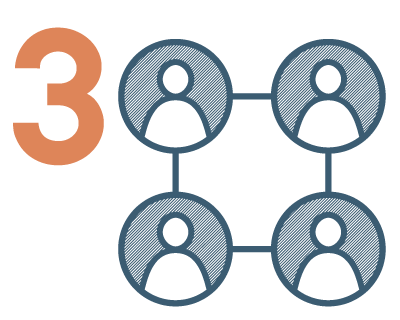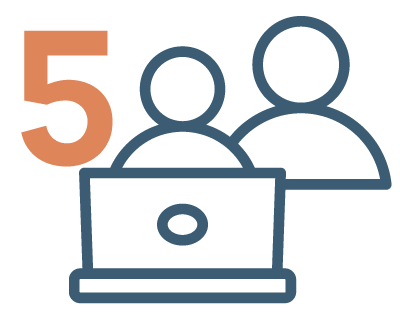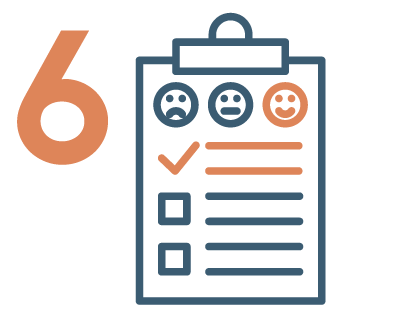A lot has been written and said about the need for greater diversity and inclusion in the workplace. It’s been long understood that a more substantial balance of genders, races and ethnicities in work settings produces better outcomes for organizations.
However, despite decades’ worth of academic papers and recommendations, companies still have a long way to go. While organizations may seek to fill their ranks with people from all different backgrounds and increase their hiring of women and those with disabilities, it doesn’t mean they’ve overcome inherent biases.
In many cases, leaders don’t truly understand the meaning of diversity and inclusion. Many companies are complying with Equal Employment Opportunity Commission (EEOC) hiring requirements that show a balance of employees in the workplace. While their efforts at building a diverse workforce are to be applauded, there’s still more work to do to realize the benefits of inclusion.
The importance of D&I
It’s essential to clearly understand the terms diversity and inclusion before moving forward in this discussion.
Diversity, at its core, involves including a mix of people from various ethnicities, genders and backgrounds within an organization. Legislation can mandate that companies incorporate diversity into their interviewing and hiring practices.
In the U.S., larger companies must file an EEO-1 form with the EEOC, which indicates the positions available in the organization and the racial backgrounds of those who work for the company. The EEOC also tracks gender diversity across organizations.
Many people think of diversity and inclusion as interchangeable, but they’re not. Inclusion defines a company’s actions to bring its workforce together and promote collaboration, provide uniform access to information and resources, and encourage regular contributions from people of diverse backgrounds.
While the government can force companies to hire people from different backgrounds, it can’t control an organization’s culture or management style.
With an understanding of the difference between diversity and inclusion, we can consider the merits of both in the workplace. It’s widely believed that diversity and inclusion can promote better financial results for an organization, but that’s unfounded.
What can be shown is that diversity and inclusion, when done right, create a working environment where people feel comfortable sharing their thoughts and viewpoints. Their varying experiences can bring new ideas to light and erode biases often present in the workplace.
Diversity and inclusion can make employees happier and less critical of one another and build a better foundation for teamwork.
How to make DE&I changes last in your organization
Building a diverse workforce is only one step in the process. Once management has a diverse team in place, they must take action to encourage equity and inclusion across groups and throughout the corporate ladder.
One of the best ways to create long-lasting change is through executive endorsement. When executives promote inclusion and exhibit it through their senior staff members and teams, mid-level managers and staff follow their example. An atmosphere of partnership develops.
Another proven method of encouraging lasting DE&I is through corporate training. Organizations that hold regular DE&I training workshops and modules for all managers and employees embed these concepts into their workforce. Employees see that the company values diversity and inclusion and isn’t simply giving it lip service.
Proven ways to promote diversity and inclusion
With the importance of diversity and inclusion established, here are a few ways to promote it in the workplace.
Look for unconscious biases in your organization

Whether you’re the CEO, an HR director or a mid-level manager, take the time to look around and uncover biases throughout your organization. Walk through the lunchroom and note whether people spend their breaks with diverse team members or each table contains separate groups.
You should also look at your various departments and the characteristics of the people in them. Is your IT group full of men? Do women dominate HR? Is accounting led by white males but full of women staff members? All of these situations are examples of potential bias.
While you can’t force your staff members to associate with a diverse group on their lunch break, you can implement activities encouraging team members to get to know one another during company time. Group activities can promote stronger relationships between staff, leading to better blending among employees over time.
Leaders who notice poor department diversity should look to HR to build a better talent pool for new employees. They should speak with their hiring managers and encourage them to look past stereotypes and consider diversity when building their teams.
Incorporate unconscious bias training for managers & employees

Various organizations offer unconscious bias training for managers and employees. This type of training works by alerting people to their inherent biases and helping them avoid decision-making based on those biases.
For unconscious bias training to work, it must not use shame or blame in its instruction. Individuals who go through the program shouldn’t feel bad for possessing a bias they’ve likely held all their lives.
Instead, employees will learn what their biases are and develop techniques they can use to overcome them when making essential decisions, like hiring or promoting team members.
Create affinity groups in your organization

An affinity group is a type of club or a subset of your organization whose members all identify with a specific ethnic group or gender. The group regularly collaborates to discuss issues they encounter in the workplace and share their experiences with other team members.
Affinity groups can alert management to significant issues in the workplace. For instance, group members could notify executives when they see a female colleague denied a promotion despite her strong performance. Similarly, African Americans who feel marginalized by a team leader might voice their concerns.
An affinity group can drive significant change in the workplace, especially if given a platform to do so. Their presence can ensure minorities, women and those with disabilities feel a stronger sense of inclusion in the organization.
Set up a listening circle for your team

Another way to promote inclusion is through listening circles. Essentially, a listening circle is a meeting designed to encourage team members to share their thoughts and viewpoints. During the listening circle time, participants share stories or anecdotes about their lives or discuss their opinions concerning a specific topic.
Before setting up a listening circle, it’s essential to identify who to include, as well as the purpose of the meeting. If a significant change has recently occurred in your organization, like a change to the executive leadership team or a location closure, a listening circle allows employees to express any concerns or questions they have.
Listening circles can also help team members better understand the people they’re working with. For instance, if you’ve recently hired new team members or are merging departments, a listening circle can be a great way to encourage people to get to know their new teammates.
Offer mentoring programs

Mentoring programs are a great way to ensure all employees get the support they need to advance in their careers. You can ask volunteers to mentor interested employees in lower and mid-level positions, giving them greater access to the knowledge they’ll need to progress.
Mentorship is particularly effective for employees from diverse subgroups or for women. For instance, connecting a high performer in a lower-level position with a higher-level female executive can give her the positive guidance she needs to become more vocal in the organization.
Incorporate diversity & inclusion in accountability metrics

One of the most important ways to promote diversity and inclusion is through various accountability metrics, including customer support surveys and employee feedback.
Accountability metrics provide an objective means of understanding whether diversity and inclusion are genuinely present throughout the organization or whether they need more attention.
Customer surveys should incorporate D&I measurements into their inquiries. For instance, a retail organization could ask specifically whether the customer felt welcome visiting a retail outlet or if employees ignored their needs.
Employees should provide their feelings concerning D&I and whether they’ve encountered any biases or discrimination the company can improve upon at the workplace.
Host a cultural potluck

Another method of encouraging workplace inclusion is food. Everyone loves food, and sharing it at work is an excellent opportunity to explore different cultures and attitudes.
You can encourage participants to bring foods that reflect their ethnicity. For instance, someone from a German background might bring bratwurst and sauerkraut, while someone with a Latino background might bring empanadas or tamales.
Sharing food often leads to discussions about an employee’s unique culture, whether they’ve grown up within the U.S. or immigrated later in life. It’s a great way to learn more about people’s backgrounds, any special traditions they follow and the countries they’ve lived in.
Diversity and inclusion build your organization’s culture
Diversity and inclusion are essential to any organization that wants to build a strong culture full of varied viewpoints and ideas. Companies that genuinely promote diversity and inclusion in their workplace and don’t simply use it as a talking point create more comfortable working environments where everyone feels their voice is heard.



